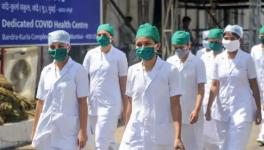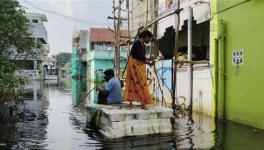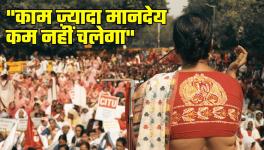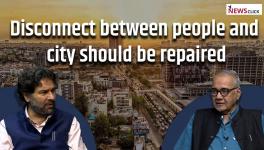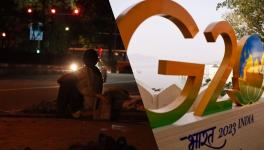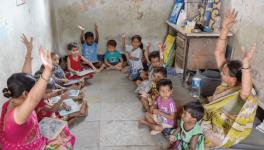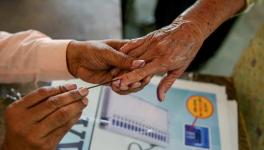Municipal Bodies Failing to Cater to Health Care Needs of Urban Poor, Finds Report
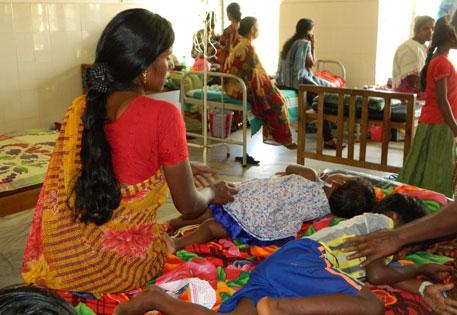
As urbanisation spreads at an unprecedented pace, with the urban population doubling from about 18% in 1960 to 34% in 2019, Urban Local Bodies (ULBs) are becoming hard-pressed and not investing enough budget in healthcare for the urban poor in cities barring a few such as Bengaluru, Mumbai and Thiruvananthapuram.
This is one of the major findings of a report published by Azim Premji University, in collaboration with 17 regional NGOs across India. Titled Health Care Equity in Urban India, the report is a fresh attempt at “unpacking health vulnerabilities and inequalities in cities in India.”
Using empirical data, the report looks at the healthcare accessibility of several groups in urban areas, whose vulnerabilities are distinct due to varied living conditions and further determined by their social position (gender, caste, class, religion) and the nature of livelihood.
With a ten-fold difference in costs between private and public healthcare facilities, the report highlights how the urban poor have to reach out to more readily available private services, over distant and often deficient health services provided by Municipal Corporations, Municipal Councils, and Nagar Panchayats, the key institutional forms of ULBs.
Ministry of Health and Family Welfare data shows that there are serious shortfalls in the availability of Urban Primary Healthcare Centres (UPHCs) that come under ULBs, based on the government’s own norms, with the national average at almost 40% (2020). The shortfalls ranged from 7% in Rajasthan to 100% in Lakshadweep.
Not only this but the distribution of services is also skewed: an older study in Ahmedabad city cited by the report shows that health services in urban wards are located at a distance from slums; some wards did not have any PHCs leading to least access by the poorest.
Further, the NSS 75th Round in 2017-18 shows that almost 75% of treated ailments were treated at private hospitals/private doctors and clinics in urban areas as compared to around 60% in rural areas. The report’s own evidence from Bengaluru shows that 30% of even the poorest quintile seek delivery care from private sources.
“This compels even the poor to access services in the private sector so that it is the dominant provider of both out-patient and in-patient services in urban areas. High expenses due to hospitalisation - a reality for most urban poor who have no access to state-run or private insurance programmes - is a major cause for people to fall further into poverty,” the report finds, adding that “Such inequities in access to and cost of services result in the poor delaying or entirely forgoing health services, particularly those with chronic conditions requiring long-term care.”
The Health Care Equity report also mentions a study conducted with the urban homeless population in Ranchi and Dhanbad highlighted that 71% of the respondents had experienced illness in the last 30 days but 89% of them did not seek any treatment.
The question then arises ‒ why are ULBs not addressing the health care needs of the urban poor, a vast section of the urban population?
It was only in 1992 when the 12th Schedule of the 74th Constitutional Amendment redefined the powers of ULBs, thus giving them responsibilities of ‘public health sanitation, conservancy and solid waste management, areas that directly address the issue of public health in general and health services in particular.
This was also the period of economic liberalisation in India, which created a space for market-driven, private-sector-led expansion in health care. Overtime the report finds that ULBs have seen a severe reduction in finances, “resulting in weakened governance and institutional capacity a separation between curative and public health functions, thus reducing the purview of the municipal health office, and an erosion of the power and prestige of the Municipal Health Officer and the scope of their activities.”
Further, the issue of overlap between the jurisdiction of ULBs and state government institutions were not addressed in the 1992 amendment. Strapped for cash, ULBs continue to look to the state Health Departments to shoulder the bulk of the responsibility.
What solutions are suggested to vitalise the ‘urban health system’ facilitated by ULBs? Successful health interventions for the urban poor tend to prioritise helping the community to help themselves, the report states. This, it believes, can be done in several ways:
1. By building up Urban Local Governance (ULB) at the community level by empowering and resourcing Ward Committees to work towards more responsive health care in their communities;
2. By building sustained community engagement through a network of community volunteers, peer leaders and women’s collectives, who know local concerns intimately and have the trust of the communities they serve, and
3. Recruiting many more and strengthening the capacity of frontline workers such as ASHAs, ANMs and AWWs, and empowering them to proactively address the needs of the communities they serve.
Arima Mishra, professor at Azim Premji University, who was instrumental in writing the report, hopes that the publication can provide “a road map for how to reimagine our urban health systems,” adding that, “Urban health care has received relatively less research and policy attention, and the report demonstrates why it is important to prioritise urban health and act now!”
Get the latest reports & analysis with people's perspective on Protests, movements & deep analytical videos, discussions of the current affairs in your Telegram app. Subscribe to NewsClick's Telegram channel & get Real-Time updates on stories, as they get published on our website.









